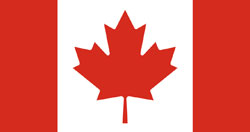Over the past few years the Canadian investment industry has hollowed out, with far too many independent investment firms being acquired. These firms have either concentrated too heavily on a declining global asset class (Canada), or failed to build a successful succession/exit strategy for the original builders of the business. Or perhaps its simply the desire for more scale by the buyers.
Regardless, this accelerating consolidation of our industry is not only disappointing, but concerning. It illustrates a divide between the desire for ownership profit and the outcome experienced by clients. There are strong egos in our business – led by the contention that investment expertise trumps all – which gets in the way of the need to focus on continuous improvement. Old style leadership chooses to avoid fixing that which isn’t seen as broken (paraphrasing Bert Lance).
This is one of the embedded risks in Canada … and perhaps elsewhere.
This is our fourth and final installment of the Decline of the Canadian Empire. In our comment we discuss the embedded risks in Canada – the correlation to emerging markets, the difficulty of analysing Canadian portfolios using traditional statistical measures, and current manager consolidation.
“When luck plays a part in determining the consequences of your actions, you don’t want to study success to learn what strategy was used but rather study strategy to see whether it consistently led to success.”
Michael Mauboussin
We began our foray into the Canadian market referring to the acquisition of Goldcorp and Solium Capital, and noting the hollowing out of Canada’s corporate elite. We failed to mention the same holds true for the “investing” elite of Canada. Recent purchases of Gluskin Scheff, CGOV, Greystone, Jarislowsky, Forresters (previously Aegon), and Integrated Asset Management have further reduced the ranks of independent managers available in Canada. These managers – and others prior to them like TAL, Senecal, Philips Hager, Highstreet, Sceptre, and on and on – had been satisfied providing investors with Canadian stock and bond products historically, but increased demand for more global long-only products, an institutional push for increased alternative products, and a desire for more scale has been driving consolidation.
Across all developed markets, we have decreasing market liquidity. While public equity markets, over the past decade, have become a smaller share of the pool of financial assets. the number of shares available via public equity in developed markets is shrinking from increased corporate buybacks and fewer issuances (according to Bernstein, IPO’s over the past decade are only a quarter of what they were in the 1990s). Why is this important?
It argues strenuously against passive investment. If liquidity is drying up, stocks that significantly outperform will, by default, become a larger proportion of the overall market thereby increasing valuation risk (higher proportion of higher priced assets). At the same time, index prices are driven by capital flows yet the increased movement into alternative assets means increased sales of public market assets.
Let’s get back to basics – why invest in public equities? Investors have always viewed this as a way to buy a fractional ownership of individual corporations. Yet, with an increasing number of companies choosing to remain unlisted, a declining number of shares available in listed corporations, a plethora of “cheap” index alternatives, and the expectation that the market will provide limited returns from this point forward, is there any wonder why there is a winnowing of investment firms?
According to doctrine, a useful asset class for investing purposes must have a positive expected return and contribute to portfolio diversification by behaving differently than other asset classes. Given Canada’s heavy bias to resources, clearly it will behave differently not only to other asset classes, but to other equity markets as well. There has been plenty written about Canada’s resource orientation making it more correlated with emerging market countries. The corollary to that would be emerging markets offer less diversification to Canadian investors, who should focus more on investing in other developed countries than their American or European counterparts.
And the analysis of Canadian portfolios is far more difficult that the broader bourses around the world. Given our very small number of securities, traditional measures of active management may not be helpful.
One comparative is “active share”, which gauges how much a fund deviates from the benchmark. However, active share is largely a function of how many stocks are in the benchmark index to begin with. To compare, assume a portfolio (P) has 30 stocks selected from a benchmark index (B) of 200 stocks. A simple calculation of active share is 1-(P/B), or 85% in this example. However, taking the same 30 stocks from an index of 1000 stocks, and the active share is 97%. This, of course, assumes there is no size bias within the portfolio selection.
The point here is that active share in the Canadian market (by our simple definition) is a much lower number than would be true in a larger market. So intermediaries looking for a 97% active share as a leading indicator of active management, may struggle with this measure here at home.
Let’s summarize our various comments around investing in the Canadian market. First, it’s a small cap market – managers with fundamental experience in small cap management will produce better long-term, risk-adjusted results. Next, liquidity is gradually decreasing (in all markets, not just Canada) –conviction, not turnover, is the most apt tool in these environments. And finally, lacking diversification and full of speculative securities, the Canadian market is a poor choice for long-term, passive investing.
We hope you’ve enjoyed our comments on Canadian investingover the past few months. It’s a wonderful country that offers a number of quite unique opportunities to improve portfolio return. Understanding the embedded risks in our market is a good start.


